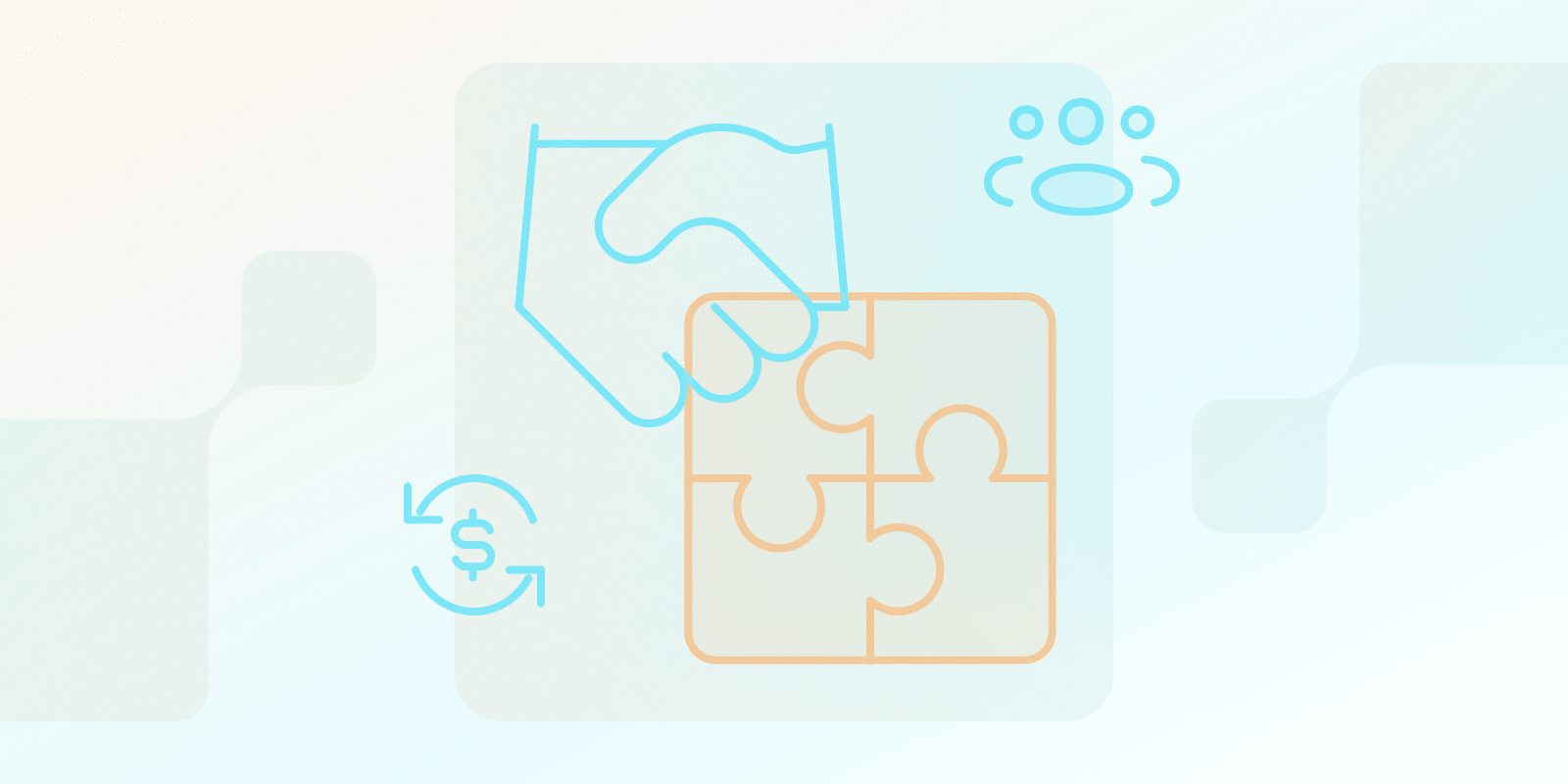SaaS Ecosystems
What is a partner program in SaaS?

What is a partner program in SaaS?
A SaaS partner program involves the collaboration between a SaaS provider and another brand where each party utilizes their respective abilities to facilitate the marketing and distribution of the SaaS products.
SaaS companies use partner programs for:
- Market reach: Parties involved can advertise their services to customers.
- Sales and revenue: SaaS businesses advertise their products through these programs, which can impact revenue generation.
- Increase brand credibility: Brand associations formed through partnerships can influence customer perceptions of product value and credibility.
What are the different types of SaaS partner programs (e.g., affiliate, reseller, integration, technology)?
There are several types of partner programs SaaS businesses should be aware of.
First of all, there is affiliate marketing. Affiliates display a product to their audience through their networks in exchange for a commission on each sale or lead they generate.
Secondly, there are the reseller programs. In these partnerships, resellers buy SaaS goods at discounted prices in order to resell them. Of course, this is also a method of reaching markets.
Furthermore, there are integration programs where a SaaS and a complementary product are integrated. Potential clients are therefore drawn to multifunctionality.
And there are technology partnerships. SaaS providers collaborate with tech businesses to produce new products or reorganize already existing ones. It’s been identified as a strategy for remaining relevant in an evolving market.
| Feature | Affiliate Programs | Reseller Programs | Integration Programs | Technology Partnerships |
|---|---|---|---|---|
| Business Model | ||||
| Revenue Model | Commission-based on sales/leads | Profit from markup on discounted prices | Revenue sharing or integration fees | Joint product revenue or licensing fees |
| Investment Level | Low – marketing efforts only | Medium – inventory and sales infrastructure | Medium – technical integration work | High – product development resources |
| Market Impact | ||||
| Primary Goal | Lead generation and sales | Market expansion | Product enhancement | Innovation and market relevance |
| Target Audience | Content creators and influencers | Value-added resellers and distributors | Complementary solution providers | Technology companies and innovators |
| Implementation | ||||
| Technical Complexity | Low – tracking links and codes | Medium – sales and billing systems | High – API and system integration | Very High – joint development |
| Time to Market | Fast – quick setup | Medium – requires training | Longer – technical implementation | Extended – development cycle |
How do you structure a successful SaaS partner program?
Structuring a partner program in SaaS depends on several things.
First of all, SaaS businesses should define their business goals. So, ask yourself: what’s your aim for SaaS partnerships?
Secondly, it’s relevant to choose the right partner because at the end of the day, achieving business goals depends on the companies you collaborate with and the type of partnership you employ.
Regarding the legal side of things, the terms of the partnership contract must be clear and reasonable. It should include roles, responsibilities, and clauses for defaulters.
Also, keep an eye on your partners and evaluate their work. If needed, make adjustments.
What is the role of channel partners in SaaS ecosystem?
The channel partners are a type of partner program specific to a SaaS ecosystem. The program invites wholesalers and retailers to purchase products at a bulk price and then sell them to users.
Unlike most partnerships, channel partners are more concerned with increasing revenue and growth. However, other services like branding, and customer support can be offered additionally.
What are the key metrics and KPIs used to measure the success of a SaaS partner program?
The success of a SaaS partnership depends on these key performance indicators (KPIs).
- Partner Acquisition Cost: The cost of acquiring partners.
- Partner Revenue: Total sales and revenue generated by partners.
- Partner Engagement: Level of engagement or activity created by partners.
- Customer Acquisition Cost by Partners: The cost of gaining new customers via partners.
- Return on Investment (ROI): The sum of returns on your investment from the partner program.
Monitoring these metrics, you can make adjustments based on data.
Conclusion
SaaS partner programs can impact the launch of products. This partnership requires thorough planning, implementation, and oversight. It is advisable to evaluate the various partner program models and determine the appropriate fit for your company.
Mutual success in business is mostly dependent on the right partnership.